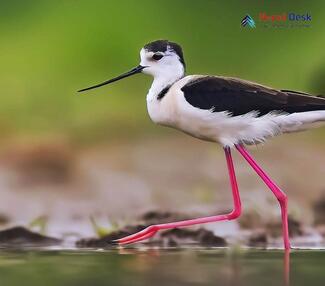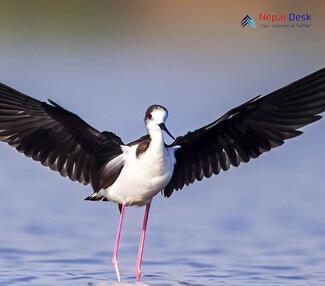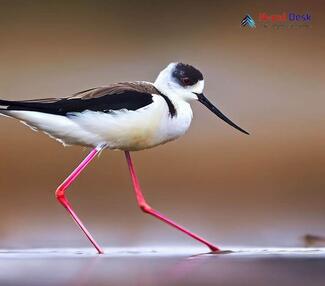The Black-winged Stilt, scientifically known as Himantopus himantopus, a slender and elegant wading bird, is a fascinating species found in wetlands throughout Nepal. With their striking appearance and unique behaviors, these birds captivate the attention of birdwatchers and nature enthusiasts alike.
Physical Features of The Black-winged Stilt
The Black-winged Stilt (Himantopus himantopus) is characterized by its exceptionally long legs, which are almost twice the length of its body. These slender waders have a predominantly white body with black wings, head, and neck. The long and thin bill is straight and needle-like, which aids them in catching insects and small aquatic creatures.
Habitat and Prey of The Black-winged Stilt
Black-winged stilts can be found inhabiting shallow wetland environments such as marshes, swamps, ponds, and flooded fields. They prefer areas with a mix of open water and muddy shores for foraging. Their primary diet consists of insects, crustaceans, mollusks, small fish, amphibians, and aquatic larvae.
Male and Female Characteristics and Behaviour of The Black-winged Stilt
Males have a glossy black back while females have brownish-black upper parts. Males also tend to be slightly larger than females. Black-winged stilts are territorial during the breeding season; males will perform courtship displays to attract mates while both sexes will defend their nesting sites from potential threats.
Nesting Habits of The Black-winged Stilt
The breeding season for Black-winged Stilts in Nepal typically extends from March to August. They construct floating nests made up of aquatic vegetation in shallow water. The female lays three to five eggs that are cryptically colored, helping to camouflage them from predators. Both parents share the responsibility of incubating the eggs for about 25 days, after which the precocial chicks leave the nest and start to explore their surroundings.
Migration of The Black-winged Stilt
While some Black-winged Stilts in Nepal are sedentary, others may travel short distances during winter months in search of suitable wetland habitats. Their agile flight makes them capable of covering significant distances when needed.
Distribution and Spotting of The Black-winged Stilt in Nepal
Black-winged Stilts have a widespread distribution throughout Nepal, occurring in many wetland habitats, including the Terai region and various Ramsar sites such as Koshi Tappu Wildlife Reserve and Ghodaghodi Lake. Prime locations for observing these elegant birds include Chitwan National Park, Jagdishpur Reservoir, and Lumbini Crane Sanctuary. The combination of open wetlands with vegetated fringes provides an excellent environment to spot these captivating waders.
In conclusion, the Black-winged Stilt is an intriguing bird species found across Nepal's diverse wetland ecosystems. With their distinct appearance and fascinating behaviors, they truly are a delight to observe for both seasoned birdwatchers and casual nature enthusiasts. So when exploring Nepal's incredible natural landscapes, keep an eye out for these captivating birds amidst the rich tapestry of wetland habitats.




